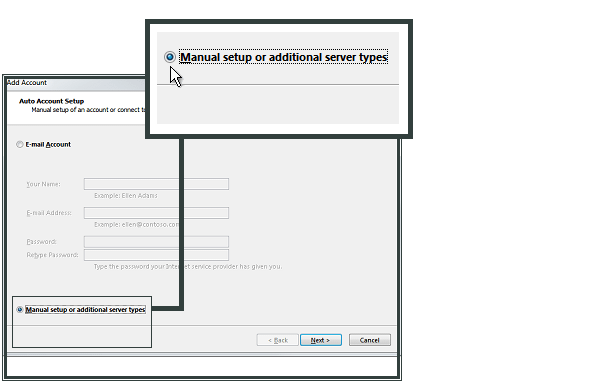
In the “Add account” window, enter information as requested (your name, Gmail address, and password). To configure Microsoft Outlook 2013 for Gmail, run Microsoft Outlook 2013.
How do i setup gmail on outlook 2013 how to#
How to configure Outlook 2013, 2010 or 2007 for Gmail If this setting remains disabled, no email client or app will be able to sync any email from your Gmail account. Check the radio button for Enable IMAP under IMAP Access. Click on the gear button from the upper right corner of the Gmail page, and then click “ Settings“. Important: First, Enable IMAP in your Gmail settingsīefore you can start using IMAP or POP in any email client or email app, you will have to first enable IMAP or POP in your Gmail settings from page. Some email clients may already have preset configurations for Gmail and if that’s the case, you wouldn’t need to enter any of these information.

Gmail Incoming and Outgoing IMAP, POP3, SMTP Server Settings With two way syncing capability, IMAP is able to avoid such problems by real time synchronizing emails between your email client and Gmail. IMAP is also more stable than POP which will sometimes loses emails when downloading them, or even prone to downloading multiple copies of the same email. The same goes to every action you perform in your email client including deleting a message, “star” a message, mark as read, etc. So, the next time you visit Gmail from, you will see that the particular email is already labeled as “important”. For example, when you move an email to a folder called “important” from your email client, it will automatically tells Gmail to put a label “important” instantly for that particular email. This means that whatever you do on your email client will be synced to Gmail. IMAP provides two ways communication between your email client and Gmail. If you’re selecting between IMAP or POP, Google encourages you to use IMAP because it is just so much better than POP.

How do i setup gmail on outlook 2013 download#
POP and IMAP is what allows you to download emails onto your email clients such Microsoft Outlook so that you can access them from your desktop or mobile devices without having to go to the login from a browser.


 0 kommentar(er)
0 kommentar(er)
